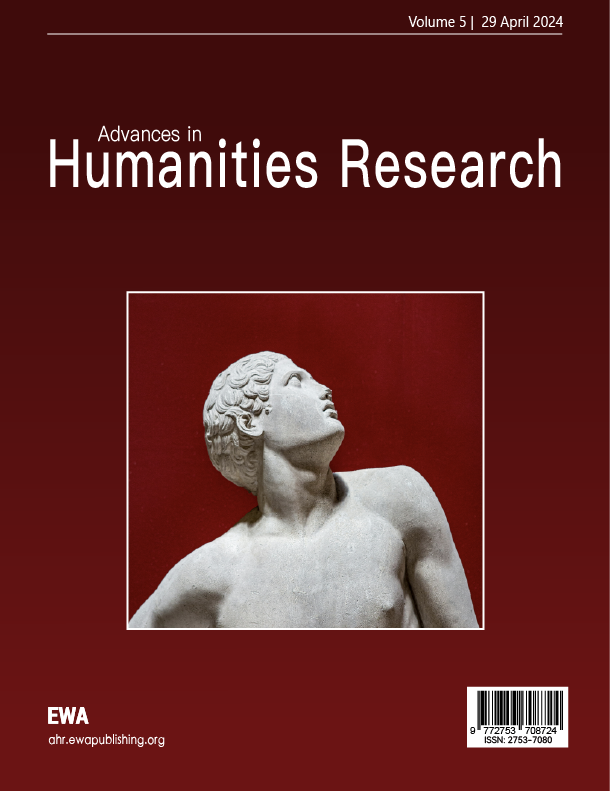1. Introduction
For years, the exploration of the relationship between reality and virtuality has persisted. "Temporary irregularities" are undoubtedly "glitches" in consciousness—such as sudden surges in electric current. If the Internet has now reached the state of "collective unconsciousness", then in what form should we mediate between the real and the void? In the digital age, design is not just a reproduction of aesthetics, but a profound integration of culture, technology, and the context of the times. The extraction and translation of traditional cultural elements will no longer be limited to the application of superficial symbols; instead, with the help of digital technology, they will undergo brand-new linguistic construction and meaning reshaping. In the era we live in, technological means represented by Virtual Reality (VR), Artificial Intelligence (AI), and 3D modeling enable designers to break the constraints of the physical world, awaken ancient cultural symbols from the slumber of history, and bring them into dynamic, interactive digital spaces. Design work is no longer merely the "interpreter" of traditional culture, but also its "creator"—by means of algorithms and dataization, it captures the order and philosophical thinking in ancient culture and integrates them into the visual context of modern society. This is not just a "reproduction" of tradition, but a structural reorganization of cultural symbols on a new technological platform, allowing them to be reborn in new temporal dimensions and spatial frameworks. This process is both a respect for and inheritance of ancient wisdom, and a bold response to modern aesthetic demands and technological changes. Design in the digital age is not just the advancement of tools, but a dialogue between design and technology in the new era.
2. Exploration of new paths for the dissemination of traditional culture driven by digital media
2.1. Deconstruction, reconstruction, and re-expression of symbols in design language
Against the backdrop of smart technology, from the perspective of semiotics, the inheritance of design is a process of symbol identification, deconstruction, reconstruction, and re-expression. The American philosopher Charles Morris divided semiotic research into three parts: "syntactics, semantics, and pragmatics", and proposed that semiotics plays the role of an "organizing science" in various disciplinary fields. Studying cultural symbols under the guidance of semiotic theory helps to further construct the internal logical structure of the cultural symbol system. Cultural translation refers to the process of conveying cultural connotations to another group and integrating traditional cultural elements from their original system into a new system. It involves two levels: the interpretation and expression of cultural information, and the operational mechanism of cultural translation, which together form a cognitive process of "prototype extraction - subjective expression - aesthetic experience". Currently, the modern translation of cultural symbols is a research focus in the field of design, and Morris’ semiotic theory can help designers interpret, extract, and translate traditional cultural resources. Through digital technology, designers can reinterpret and endow ancient cultural symbols with new meanings, enabling their inheritance and revitalization in contemporary design. The heterogeneous isomorphism between symbols and design not only preserves the core values of traditional culture but also realizes the reproduction of symbols through technological and design means, promoting the innovation and development of culture. This interactive relationship between symbols and design makes design not just a formal reproduction, but a in-depth transmission and re-creation of cultural connotations. On the basis of extracting traditional cultural elements, designers do not merely reproduce them simply, but deconstruct and reconstruct them through digital technology, endowing these elements with new forms and expressions to revitalize ancient cultural symbols. For example, the front sculpture design of the high-end "Hongqi L-series" new energy vehicles draws inspiration from the symbols of "auspicious clouds" and "dragons" in traditional Chinese culture. This design is not only a tribute to Chinese culture but also a symbol of luxury and nobility. In this process, designers do not just repeat ancient cultural symbols; instead, they identify, deconstruct, and reconstruct the symbols, and reapply them on the basis of modern digital technology. This is not just a formal aesthetic expression, but also a carrier of cultural evolution and spiritual sustenance, serving as a bridge between traditional Chinese culture and modern design.
The Qing Dynasty painter Shi Tao once discussed the idea of "drawing on the past to pioneer the future", meaning that the achievements of predecessors can serve as a reference for later generations to create new art. The cultural relics unearthed from the Mawangdui Han Tomb in Changsha, Hunan Province—including patterns on silks, lacquerware, and murals—have a profound impact on modern design. These patterns not only reflect the aesthetic style of the Chu and Han dynasties but also contain rich cultural and symbolic meanings, such as geometric patterns, cloud patterns, phoenix patterns, and dragon patterns. Beyond their strong visual appeal, these patterns carry abundant symbolic connotations, representing auspiciousness, heaven and earth, life, cosmic cycles, and other philosophical thoughts. Modern designers can draw inspiration from these patterns and apply them to digital media design. Through the reproduction and re-expression of these traditional patterns, design works can convey a unique oriental charm, allowing designers to deconstruct ancient cultural symbols and re-express them through modern design, thereby realizing the inheritance and promotion of culture.
2.2. Dialogue between tradition and modernity: immersive experience of cultural resonance
The cognitive scientist Roger C. Schank pointed out that "Humans are born to understand stories, not logic". Compared with macro systems and micro rules, narratives are easier for people to understand and possess more emotional power. Embedding human behavior in a certain narrative framework enables the creation of attractive experience design. Narrative is an intuitive dimension in the structure of interactive art; through narrative, systems and rules are implemented and enforced at the level of user behavior and experience. Interactive narrative is not only an important entry point for virtual experience design methods and an intuitive object of design but also a key method for the design process and evaluation.
With digital technology, designers not only apply ancient cultural symbols in modern design but also use digital technology to achieve technical means beyond cultural display. Combined with the sincere transmission of emotions to arouse resonance, this enhances users’ in-depth cognition and recognition of culture. Gustave Flaubert once said, "Art tends toward science, and science toward artistic expression; they part at the foot of the mountain, but one day will meet again at the summit." Through digital means such as Virtual Reality (VR), Augmented Reality (AR), and full projection, users are brought into an interactive environment closely connected with cultural symbols and historical backgrounds. Such immersive experience design not only displays culture but also realizes the tension of culture through the mapping and expression of emotions. For example, China’s first 3A masterpiece game Black Myth: Wukong is produced using "Unreal Engine 5" and is based on Chinese mythological stories. Its landscapes are modeled after ancient buildings, sculptures, and murals, and its soundtrack extensively uses traditional Chinese musical instruments such as the guzheng (Chinese zither), bo (Buddhist bowl), bang (wooden clapper), and gong, while integrating intangible cultural heritages like Northern Shaanxi storytelling—fully combining traditional culture with modern games (see Fig. 1: The Use of Traditional Cultural Elements in the Game Black Myth: Wukong). Upon its release, the game set historical records, and the real traditional cultural relics and historical sites behind it have also gained enormous enthusiasm with the help of the game’s technology. By recreating real scenes through virtual modern means and narrating myths, the immersive experience design not only displays traditional Chinese culture and intangible cultural heritage art symbols but also establishes a deep connection between users and the spiritual essence of culture through interaction and plot progression. In this digital age, through such a design method that reproduces culture via digital technology, traditional culture is no longer a static heritage but a vibrant and meaningful form of expression—perceived through hearing, sight, and touch. In recent years, The Palace Museum in China has realized the global dissemination and re-creation of traditional culture through digital technology. It has launched a "Metaverse Museum", namely the "Digital Palace Museum", allowing users to visit the Palace Museum online through Virtual Reality (VR) technology and even participate in the cultural relic restoration process. These digital platforms not only attract users but also draw a global audience through translations and multilingual services. Users can choose different endings to experience different historical stories of the Palace Museum. This treasure trove of history and culture is bringing its millennium-old glory into the digital age through a magnificent encounter between culture and technology. Here, everyone can become a witness of history and an inheritor of culture.
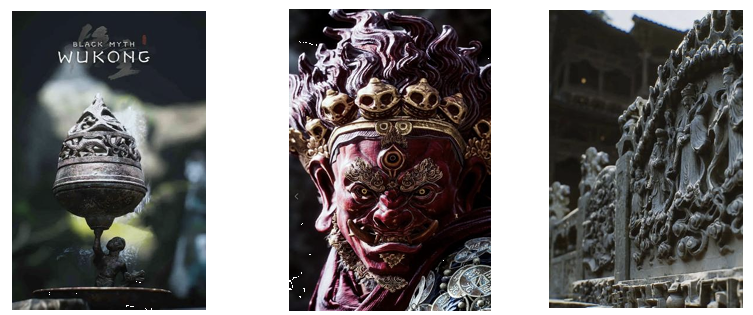
Digital technologies such as 3D printing, Virtual Reality (VR), and Augmented Reality (AR) have not only changed the form of design but also provided new possibilities for the expression of design content. Creators of virtual reality art differ from producers of traditional art forms: the creative subject is not detached from the work but is physically involved in it. In the context created by virtual reality, the perception of all existing things is premised on the user’s physical presence. The French philosopher Maurice Merleau-Ponty argued that human "bodily intentionality" can form a "body schema", and the schema presented by the internal and external movements of the body explains the relationship between the body and things [1]. With the development of science and technology, cultural inheritance is no longer a one-way reproduction of history but a form of subject interaction. Modern technology has provided new carriers for the dissemination of traditional culture; especially among Generation Z, through immersive experiences, cultural inheritance has become richer, more three-dimensional, and easier to understand and accept. At the same time, this cultural "dialogue" also means that with the continuous advancement of technology, the modern expression forms of traditional culture will become more diverse. Future design innovation can further explore the in-depth integration of cultural elements and technology; through these technologies, designers can more flexibly present traditional cultural elements and break the boundaries of time and space.
2.3. Digital engines pioneering a new cultural landscape
Virtual art is an art form based on digital media, interactive, and using virtual images as its medium. In essence, virtual art is art that interacts with humans, with particular emphasis on the perceptual factors of the audience’s behavioral experience. In particular, the involvement of multi-centered, multi-path, and multi-interface network media has transformed the narrative of virtual art from linear to non-linear, its form from closed to open, and its aesthetics from appreciation to experience. Virtual art focuses on social landscapes such as body and media, space and existence, gender and identity, technology and art, democracy and power, and ethics and religion. It reveals the interrelationships and overall connections among people (artists and audiences), objects (artworks), and events (artistic behaviors and artistic events) [2]. Driven by digital technology, a brand-new path for the sustainable development of culture has been provided. Through digital preservation, global dissemination, design innovation, and educational promotion, culture will no longer be limited by time, space, and material conditions, and will be able to continuously regenerate and inherit in the era of globalization. At the same time, digital manufacturing technology has also injected new vitality into the cultural industry; the development of digital modeling technology has built a foundation for inheriting traditional paradigms while further exploring the possibilities of design, making works more flexible and growth-oriented. In the future, with the continuous advancement of digital technology, the sustainable development of culture will present more possibilities, contributing to the diversity and innovation of global culture. Take the Maltese artist Nico Conti as an example: his 3D-printed porcelain works have attracted the attention of craftsmen. Unlike the uniformity common in mechanically manufactured objects or classical art, Conti combines ceramic objects with 3D-printed lace patterns. He uses minor glitches in the printing process to create defects and unique extrusions on the surface of his structures, and integrates 3D-printed lace patterns into the surface, adding a distinct sense of distortion to his works (see figure). These works have attracted widespread social attention.
"There is constancy and change in all things: constancy means inheritance; change means innovation. Inheritance is easy, but innovation is difficult. Yet constancy emerges from inconstancy, and change arises from constancy—neither is achieved overnight." These words aptly explain the dialectical relationship between inheritance and innovation: "constancy means inheritance" refers to the inheritance of tradition; "change means innovation" refers to innovating on the basis of inheritance; "constancy emerges from inconstancy, and change arises from constancy" illustrates that "constancy" and "change" form a continuous cycle. This repeated cycle of inheriting tradition and innovating is a driving force for social development. Moreover, the revival and development of culture through digital technology is not limited to the inheritance and regeneration of local culture but also promotes the dissemination and re-creation of traditional cultural genes. Through the Internet and social media platforms, traditional cultural elements can quickly cross-national borders and integrate into the global cultural and creative industry.
3. New media interactive art: the driving force of cultural fermentation
3.1. Particle representation and digital integration: delicate expression in dynamic art
As a discipline that studies symbols and their meanings, semiotics is widely applied in digital media. In traditional symbols, they are abstracted into particle elements (such as points, tiny graphics, and short lines); from a semiotic perspective, these particles can be endowed with specific meanings and serve as the minimal constituent units of symbols. In digital media expression, strengthening particle elements for abstract expression can construct richer, more in-depth narrative visuals and unique perspectives. As the basic constituent units of digital art and real media (e.g., LEDs), particle elements can act as symbols with "signifiers" (forms) and "signifieds" (meanings), conveying specific cultural or emotional information through their dynamic performance and interactive characteristics. Particle elements can convey specific emotions and drive the atmosphere of a scene through their visual expressions such as form, movement, and color. They can also form complex symbol systems through arrangement and combination to realize the transmission of recognizable information for representation. Through the collective movement of particle elements, the symbolic expression of conceptual elements at the internal conscious level—such as nature, life, and group behavior—can be achieved, leaving sufficient space for the audience’s emotional divergence. Different particle forms, quantities, and arrangement methods can all be part of the symbol system, carrying specific meanings. Take the digital works of the artist Refik Anadol as an example: his works consist of LED media walls and CNC-machined foam. He combines paintbrushes with AI algorithms, using paint as big data and the canvas as architectural space to present the operating mechanism of the human brain to visitors (see Fig. 2).
In the presentation of particle effects, the production function of Touch Designer is particularly prominent. When combined with digital media art, it demonstrates powerful capabilities in real-time graphics processing, interactivity, and multimedia integration. As a visual programming tool, Touch Designer can realize highly complex and dynamic visual expressions through technologies such as particle effects, sound visualization, and data-driven graphic generation. At the same time, it seamlessly connects with various external devices such as cameras, sensors, and VR devices, enhancing the audience’s interactive experience (see Fig. 3). Artists can use Touch Designer to create fast, immersive, multi-sensory interactive artworks, breaking the static continuity of traditional art. This enables digital media art to achieve in-depth integration and innovation across multiple dimensions—including vision, audio, and space—bringing more diverse forms of artistic expression (see Fig. 4).
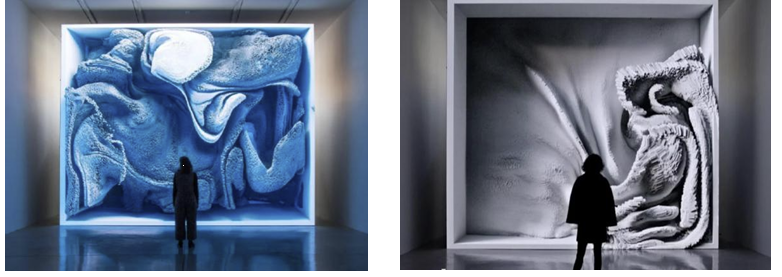
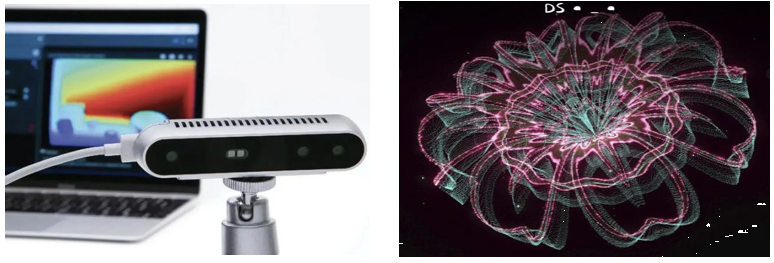
3.2. Art forms of synaesthetic transformation: a new perspective on senses and expression
In cultural heritage museums, the application of multi-sensory experience methods awakens people’s senses through different media, stimulating their curiosity, emotions, memories, and other feelings. This enhances the audience’s sense of immersion, breaks the boundaries between the audience and the cultural heritage museum, and has become a new trend in the exhibition design of modern cultural heritage museums. The levels of digital media interactive art—from technical foundation to interactive experience, from emotional arousal to cultural expression, and to surreal immersive experience—function together to form a multi-dimensional interactive art system [3]. Each level has its unique role, capable of evoking the audience’s thinking and emotional resonance. The stimulation of multiple senses and the transmission of information can further deepen users’ experience and reflection. Through continuous exploration of the integration of these levels, digital media interactive art has become an important force driving the expression forms of modern art and the audience’s participation experience. Take Sondra Perry’s Wet Waves – Typhoon Strikes, Three-Screen Workstation (see Fig. 5) as an example: Perry’s innovative inspiration came from her exposure to J.M.W. Turner’s The Slave Ship (see Fig. 4)—a work depicting a real event in 1783, where the captain of the British slave ship The Zong threw 133 Black slaves overboard to claim insurance compensation. In the foreground of the painting, the limbs of many Black people in chains float on the sea, struggling in despair. Perry’s work uses a waterproof rowing machine filled with hairspray, connected to three monitors, making the audience’s body part of her work. The work opens with a continuous sequence of computer-generated bright purple ocean images. Using Ocean Modifier software, Perry was able to simulate and distort ocean waves. Integrating multiple media and technologies, the work provokes reflections on modern race and identity; at the same time, the audience’s movement on the rowing machine drives the operation of the installation, unconsciously creating a physical and psychological connection between the experiencer and the painting The Slave Ship. In his essay "Synaesthesia", Qian Zhongshu pointed out that human psychological perception "generates synaesthesia based on association". Through long-term social practice, humans acquire a wealth of practical experience and sensory experiences; under different sensory stimuli, the brain processes perceptions based on existing experiences, memories, imaginations, and associations, transforming externally perceived sensory experiences into sensory cognition in familiar fields, and ultimately forming people’s cognitive understanding of objective things at different levels [4]. In the literature Interactive Installation Experience Design Based on the Theory of Synaesthetic Transformation, synaesthesia is further divided into three stages: "1. Transferred Synaesthesia; 2. Mixed Synaesthesia; 3. Mental Synaesthesia". In Emotional Design, Don Norman proposed a hierarchical theory of user emotional experience, dividing user emotional experience from bottom to top into three levels: visceral level, behavioral level, and reflective level. Sensory stimulation can effectively strengthen users’ memories and emotional connections; multi-sensory stimulation allows cultural information to be more deeply embedded in users’ memories—especially through the dual impact of vision and hearing, making cultural content easier for the audience to remember. At the same time, the integration of non-traditional senses such as touch and smell can create more profound emotional experiences. It can also break through language and cultural barriers, helping users more intuitively access and understand unfamiliar cultures. Because senses such as vision and hearing are forms of expression beyond language; through these sensory stimuli, digital media can eliminate language barriers in cultural communication and promote cultural exchange in the context of globalization.
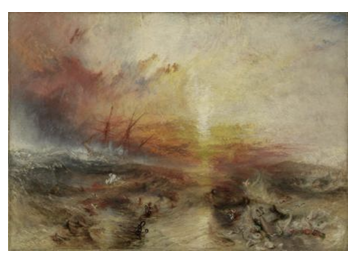
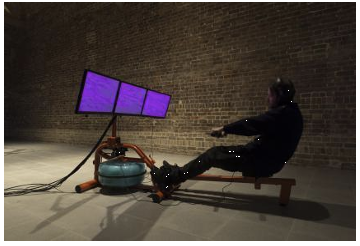
Immersive experience has made digital media art one of the most effective means of engaging human senses. Through the combination of multi-sensory elements such as light and shadow, sound, and space, digital media can provide the audience with a panoramic sensory experience. Elements such as light and shadow, music, and spatial layout are combined not only to allow the audience to perceive culture through vision but also to interact with culture through sensory levels such as sound and perception. In the "Mawangdui Han Dynasty Cultural Immersive Exhibition", digital light and shadow effects and spatial design were used; the display of colors and dynamic particles not only provided the audience with visual effects (see Fig. 6) but also, combined with supporting sound effects, allowed the audience to perceive the promotion of "Han" dynasty culture through both vision and hearing. This enabled the audience to "touch" the pulse of life spanning thousands of years—every gaze became a dialogue across time and space, every exploration a profound understanding of Han dynasty culture, and every moment an experience of the magnificent tranquility of the circulation of life.
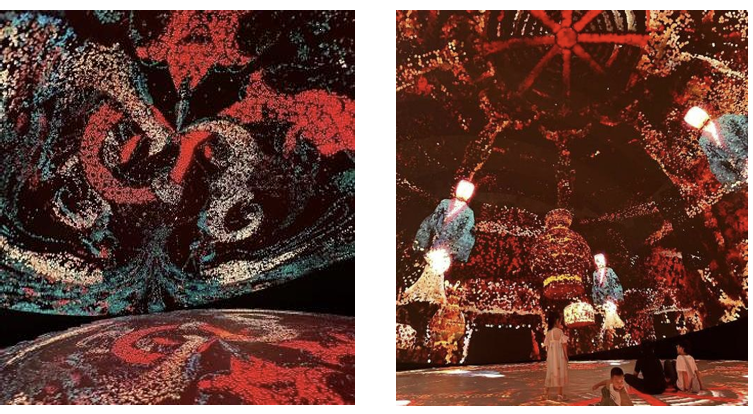
3.3. Interaction deepening the complete expression of digital art
In the eyes of digital artists, their design works inherently regard users as part of the design; the cycle of the work being recognized as a complete artistic expression is only completed when the installation interacts with the user. The connectivity between digital media art and user interaction is reflected in multiple aspects: enhancing user experience, strengthening a sense of participation and immersion, promoting content dissemination, providing personalized customization and information feedback, creating emotional connections, and driving technological innovation. Through interaction, digital media not only breaks the traditional one-way communication model but also creates more diversified forms of participation for users, promoting the multi-level development of content. There was once a design work that interacted with passersby in the form of a "low-poly" dog projected onto a store window (see Fig. 7). These interactions manifested as the projected dog dynamically choosing to approach or move away from people, and appearing bored or excited when passersby passed by. Additionally, the projected dog would exhibit friendly or aggressive behaviors based on the audience’s actions. Achieving this effect required the coordination of two processes: a video tracking system capable of perceiving the audience, and a game engine that determined the dog’s behaviors (see Fig. 8). Although the dog was clearly digital due to the use of "low-poly" rendering, the longing experienced by the audience was similar to that which they would feel at a local animal shelter. This raises a profound question: why do audiences not go to local animal shelters to interact with real dogs in urgent need of attention and care? The emotion conveyed through the interaction is so real that it provokes deep reflection. In this work, the dog’s behaviors (approaching, moving away, excitement, boredom, etc.) express the emotional reactions of animals. This real-time interaction provides passersby with a dynamic experience; by utilizing interactivity and immersion, it makes people feel that their actions are directly related to the behaviors of the virtual dog, thereby evoking emotional resonance. The interaction between the audience and the virtual dog creates a sense of closeness and empathy, stimulating their reflection on similar situations in the real world. Although the dog is digital, it establishes a real emotional connection with the audience through its behaviors, prompting the audience to reflect on the balance between emotional needs and responsibilities in the virtual and real worlds. Furthermore, in the open environment of a store window, the artwork is no longer an unattainable exhibit but is integrated into daily life, creating connections with the audience at any time. This form of art is more accessible and socially influential, and the addition of the interactive link further elevates the completeness of the art.

In the future, with the advancement of technology, the interactivity of digital media will become even more important, serving as a core element of content creation and user experience. Interaction is the intuitive behavioral reflection of the communication between digital media virtual objects and humans. The goal of interaction is to rely on interactive technology to achieve a natural and harmonious way of communication between humans and virtual objects, guiding users to better understand and explore the virtual time and space. Interactive technology transforms our understanding of images into a multi-sensory interactive space based on a time framework. In such a virtual space, variables of time and space can be modified at will, and the audience can freely change their relationship with the space. At the same time, the virtual environment also interacts with humans, and the audience can adjust the environment they discover to a certain extent. Digital media interactive art is an art form based on human-computer interaction; it is the intuitive behavioral reflection of the communication between humans and virtual things, emerging to meet the dual needs of human digitalization and machine intelligence. It emphasizes the interaction between humans and machines; interactive art also emphasizes the audience’s enthusiasm and initiative, requiring the audience to participate in the work, and through this interaction, causing reversible or irreversible changes in the work itself, thereby generating real-time and variable artistic effects [5].
4. The intertwining of digital pulse and life pulse: the symbiotic dance of installation art
4.1. The continuation of ai-generated creatures in digital art: virtuality
Whether it is Courbet’s Realism, Impressionism, Fauvism, Expressionism, Futurism, Abstract Expressionism, or other schools, all have presented the materiality of the body in the form of art. The second stage spans from the 1960s to the 1990s: the perception of the body was expressed through the body itself. Although the cultural body and the perceptual body were intertwined, the materiality of the body was generally strengthened and highlighted, and the body was manifested through the materiality of the physical flesh. During this period, performance art and body art were its main forms of expression. The third stage began in the 1990s and continues to the present: characterized by the technological transformation and reshaping of the body. While technology intervenes in and partially replaces the physical flesh, it also dissolves the physical flesh in a potential way. The manifestation of the body has become a manifestation of technology. This change began with cyborg-type artistic practices and gradually moved toward the abandonment and complete dissolution of the body in virtual reality art and metaverse art.
From a certain perspective, the use of digital media, digital art, and physical detection devices has become an extension of human conscious perception, endowing us with perceptual and interactive capabilities beyond the boundaries of the physical body. Then, how can we further extend this idea to combine digital art and virtual design with organic organisms in reality, forming a new type of "digital organic lifeform"? That is, through simulation and reproduction, digital art imitates and extends organic biological forms across multiple dimensions—including vision, hearing, and voluntary activity. With the help of AI, it analyzes and calculates biological growth laws and behaviors such as the growth process of plants and the movement patterns of animals, and presents them dynamically, thereby activating the coupling between organisms and electronic information. Currently, by learning from a large amount of real plant data, artificial intelligence can achieve highly accurate biomimetic reproduction of plant forms. Through deep learning and Generative Adversarial Networks (GANs), AI can capture the leaf structure, texture, color changes, and light and shadow effects of plants, generating detailed models of virtual plants. These models are not only highly similar to real plants in appearance but can also adjust their visual characteristics in real time according to changes in the environment, enabling them to exhibit characteristics such as seasonal changes and light responsiveness—just like real plants (see Fig. 9).
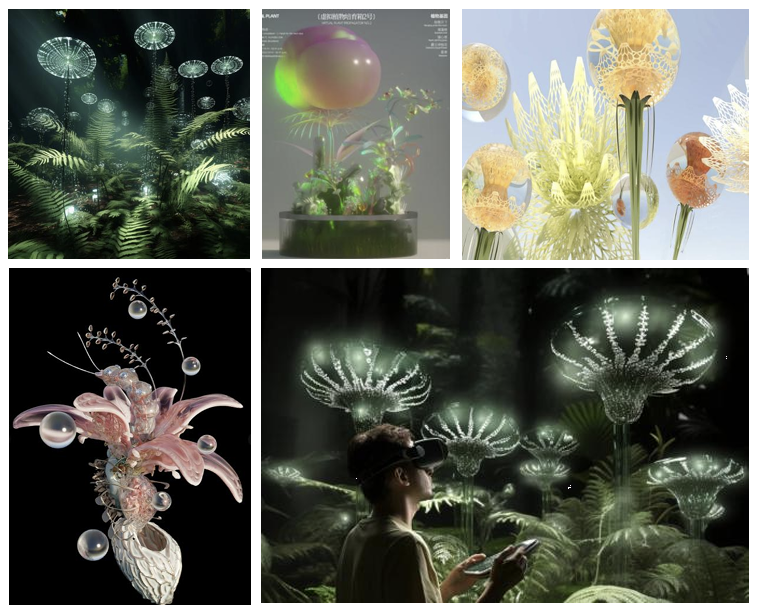
By reproducing and extending the biological characteristics, behavioral patterns, and evolutionary processes of the natural world, digital art can create a brand-new form of biological expression in virtual environments, referred to as "cyber creatures". These "cyber creatures" achieve a high degree of visual simulation and innovation, combined with dynamic light and shadow effects, providing the audience with novel experiences. AI-generated virtual plants blur the boundary between the virtual and the real, enhancing the sense of immersion of artworks and bringing a brand-new form of artistic expression. With the further maturity of technology, the application of virtual plants in installation art will continue to expand—this not only enriches the expression methods of art but also provides the audience with a more immersive and interactive natural experience.
4.2. The infiltration and diffusion of digital art in bio-design: reality
Bio-design utilizes biological principles and natural processes to create products, buildings, or systems that are functional, aesthetic, and sustainable. It expands the application scope of multi-biological effects and combines them with aesthetics, making up for the deficiencies in the application of multi-biological effects in product design and forming design methods and processes from the perspective of product emotionalization, thereby providing clear directions for designers to utilize biological characteristics [6]. This type of design not only focuses on the reproduction of natural forms but also emphasizes the use of biological materials and processes, promoting eco-friendly and renewable design methods. For example, mycelium, plants, or microorganisms are used to create self-healing materials or structures. Bio-design involves working in collaboration with natural organisms, while biomimetic design involves imitating the working principles of nature for artificial design. Artistic installations created by combining bio-design concepts with digital art can respond to external data in real time: through intelligent computers simulating neural networks to transmit and diverge information, and finally presenting it visually through mechanical devices, thereby creating highly interactive digital biological works. "MEART - The Semi-Living Artist" (see Fig. 10) was created by a group of scientists and artists through Symbiotic A, an organization dedicated to developing new biological, ecological, bioethical, neuroscientific, and engineering technologies. "MEART" is one of these research projects, aiming to explore the relationship between living nerve cells and robots. Cultured nerve cells grow in a laboratory; these cells act as a "brain", sending information to a robotic arm that generates two-dimensional drawings (see figure). Data captured by cameras observing the environment around the installation is sent to the laboratory housing these living nerve cells. Based on what happens in the environment, the nerve cells send information to the robotic arm to influence the composition of the drawings. Although these two components of the project are not located in the same geographical location, they can still communicate in real time via the Internet. However, once the nerve cells die, the robotic arm also "dies". The concept behind MEART introduces a platform where biological and artificial organisms can merge into one. The possibilities of what the robotic arm can draw are completely open-ended. When life and technology are combined in this way, people are faced with the question of what happens when independent human capabilities are endowed with the expressive power of machines. The fact that a robot creates these images also raises questions: what can be defined as art, and where does creativity come from? Such a machine—capable of processing its surrounding environment and producing creative outputs—can itself be regarded as an artist.

Synthetic biology is an interdisciplinary field that integrates knowledge and tools from biology, genomics, engineering, information science, and nanotechnology, marking the engineering of life. For synthetic biologists, living matter is programmable material, and two core technologies—DNA sequencing and synthesis—have greatly promoted the development of this field [7]. There is another way in which information technology and biological mechanisms are combined in installation art: they serve as the "surface" and "core" of each other. Digital technology injects dynamism and interactivity into bio-design, while bio-design provides digital art with rich natural inspiration and intrinsic meaning. The evolution and development of organisms—especially during the short period when people interact with the installation (from approaching to leaving)—are slow and microscopic. The processes and results of biological development and metabolism can be presented in the form of electronic signals or digital art. Here, digital media serves as the "surface" and the intrinsic meaning and value of the installation as the "core", complementing each other. This combination not only expands the expression forms of art but also promotes the interactive experience between humans and the installation. It makes the work not only highly visible and expressive but also increases the complexity and narrativity of the installation. The artist Paul Vanouse magnetized a plate of agar, allowing the electrical output of human DNA to polarize it and present it in the form of a "loading bar" (see Fig. 11). Visual Correction transforms invisible things like DNA into something easy to view. It attempts to make intangible components such as emotions, bacteria, and DNA perceptible and capable of evoking human emotions. Vanouse uses human perception to create emotional responses to familiar things—in Visual Correction, this manifests as seeing the familiar progress loading bar. By converting the electrical output of DNA into the form of a loading bar, the work presents abstract and complex concepts like DNA in a daily recognizable way, thereby narrowing the distance between the audience and science. Paul Vanouse used the familiarity of human perception—the symbol of the loading bar—to trigger the audience’s emotional responses, enabling them to generate an immediate, emotional resonance when facing complex scientific phenomena. This artistic technique not only showcases invisible elements like DNA but also discusses the relationship between technology, information, and biology, exploring how to present scientific facts through artistic expression to make them more accessible to the audience and generate emotional connections with them.
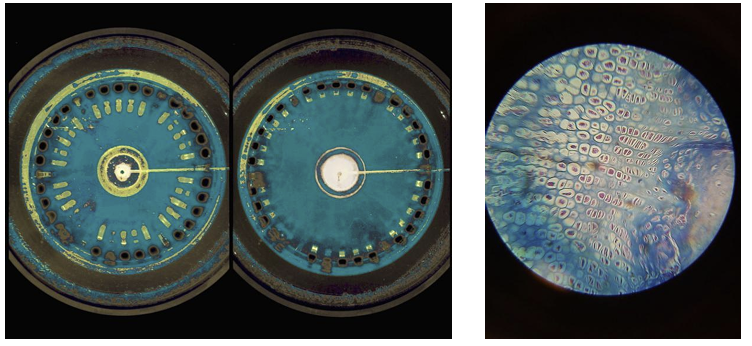
5. Conclusion
The rapid development of digital technology has provided a brand-new dimension for exploration in the field of design. It has not only broken down the barriers between traditional culture and modern technology but also endowed cultural symbols with brand-new vitality and forms of expression. From Virtual Reality (VR) to Artificial Intelligence (AI), from biomimetic design to bio-art, designers use digital tools to break the boundaries of physics and time, making the inheritance and development of culture vivid and rich. However, the significance of art lies not only in formal innovation but also in providing conceptual inspiration and ideological value that remain with the viewer after the aesthetic experience. Maintaining a profound resonance between technology and spirit endows the current digital age with brand-new vitality. The future of design will continue to move forward at the intersection of technology and culture, opening up a smoother path for innovation and expression.
References
[1]. Merleau-Ponty, M. (2012). Phenomenology of Perception (Jiang, Z.H., Trans.). The Commercial Press.
[2]. Wang, K. (2018). "Reconstruction · Interaction · Body: Three Key Words of Virtual Aesthetics." Art Research, (06).
[3]. Jin, Y., Song, X., & Ma, N. (2024). A Review of Domestic Research on Multi-Sensory Experience in Cultural Heritage Museums. Packaging Engineering, 1-21. [Retrieved on 2024-09-13].
[4]. Zhong, M., He, R.K., & Zhao, D.H. (2021). Interactive Installation Experience Design Based on the Theory of Synaesthetic Transformation. Packaging Engineering, 42(04).
[5]. Chai, Q.X. (2012). "Immersive Experience of Digital Media Interactive Art." Decoration, (02).
[6]. Cao, G.Z., Wang, H., & Zhang, S. (2017). Product Emotional Design Method Driven by Hierarchical Biological Characteristics. Packaging Engineering, 38(24).
[7]. Dai, L., & Tang, Y. (2024). Synthetic Biology, Intelligent Manufacturing for the Future, and Machine Intelligence: A Review of the Academic Forum of the "5th CAFA EAST - Tech Art Season". Art Research, (03): 13-13.
Cite this article
Wang,X.;Wang,R. (2025). The digital rebirth of cultural genes in the era of smart technology. Advances in Humanities Research,12(6),186-195.
Data availability
The datasets used and/or analyzed during the current study will be available from the authors upon reasonable request.
Disclaimer/Publisher's Note
The statements, opinions and data contained in all publications are solely those of the individual author(s) and contributor(s) and not of EWA Publishing and/or the editor(s). EWA Publishing and/or the editor(s) disclaim responsibility for any injury to people or property resulting from any ideas, methods, instructions or products referred to in the content.
About volume
Journal:Advances in Humanities Research
© 2024 by the author(s). Licensee EWA Publishing, Oxford, UK. This article is an open access article distributed under the terms and
conditions of the Creative Commons Attribution (CC BY) license. Authors who
publish this series agree to the following terms:
1. Authors retain copyright and grant the series right of first publication with the work simultaneously licensed under a Creative Commons
Attribution License that allows others to share the work with an acknowledgment of the work's authorship and initial publication in this
series.
2. Authors are able to enter into separate, additional contractual arrangements for the non-exclusive distribution of the series's published
version of the work (e.g., post it to an institutional repository or publish it in a book), with an acknowledgment of its initial
publication in this series.
3. Authors are permitted and encouraged to post their work online (e.g., in institutional repositories or on their website) prior to and
during the submission process, as it can lead to productive exchanges, as well as earlier and greater citation of published work (See
Open access policy for details).
References
[1]. Merleau-Ponty, M. (2012). Phenomenology of Perception (Jiang, Z.H., Trans.). The Commercial Press.
[2]. Wang, K. (2018). "Reconstruction · Interaction · Body: Three Key Words of Virtual Aesthetics." Art Research, (06).
[3]. Jin, Y., Song, X., & Ma, N. (2024). A Review of Domestic Research on Multi-Sensory Experience in Cultural Heritage Museums. Packaging Engineering, 1-21. [Retrieved on 2024-09-13].
[4]. Zhong, M., He, R.K., & Zhao, D.H. (2021). Interactive Installation Experience Design Based on the Theory of Synaesthetic Transformation. Packaging Engineering, 42(04).
[5]. Chai, Q.X. (2012). "Immersive Experience of Digital Media Interactive Art." Decoration, (02).
[6]. Cao, G.Z., Wang, H., & Zhang, S. (2017). Product Emotional Design Method Driven by Hierarchical Biological Characteristics. Packaging Engineering, 38(24).
[7]. Dai, L., & Tang, Y. (2024). Synthetic Biology, Intelligent Manufacturing for the Future, and Machine Intelligence: A Review of the Academic Forum of the "5th CAFA EAST - Tech Art Season". Art Research, (03): 13-13.





